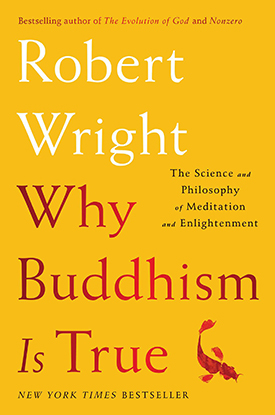Highlights from this book
-
Sometimes understanding the ultimate source of your suffering doesn’t, by itself, help very much.
-
We spend more time envisioning the perks that a promotion will bring than envisioninng the headaches it will bring. And there may be an unspoken sense that once we’ve achieved this long-saught goal, once we’ve reached the summit, we’ll be able to relax, or at least things will be enduringly better.
-
Natural selection doesn’t “want” us to be happy, after all; it just “wants” us to be productive, in its narrow sense of productive. And the way to make us productive is to make the anticipation of pleasure very strong but the pleasure itself not very long-lasting.
-
One thing I occasionally do when I’m feeling very sad…is sit down, close my eyes, and study the sadness: accept its presence and just observe how it actually makes me feel.
-
One of the take-home lessons of Buddhist philosophy is that feelings just are. If we accepted their arising and subsiding as part of life, rather than reacting to them as if they were deeply meaningful, we’d often be better off. Learning to do that is a big part of what mindfulness meditation is about.
-
Feelings are designed to encode judgements about things in our environment.
-
True, pure enlightenment, in this view, is like what mathematicians call an asymptote: something you can get closer and closer to but never quite reach.
-
The idea of self is an imaginary, false belief which has no corresponding reality, and it produces harmful thoughts of ‘me’ and ‘mine’, selfish desire, craving, attachment, hatred, ill-will, conceit, pride, egoism, and other defilements, impurities, and problems. It is the source of all the troubles in the world from personal conflicts to wars between nations. In short, to this false view can be traced all the evil in the world.
— Walpola Rahula -
So too with perceptions, mental formations, and consciousness. Are any of these things really under control—so completely under control that they never lead to suffering? And if they’re not under control, then how can we think of them as part of the self?
-
If you followed the Buddha’s guidance and abandoned the massive chunks of psychological landscape you’ve always thought of as belonging to you, you would undergo a breathtaking shift in what it means to be human. If you attained the state he’s recommending, this wuold be very different from having a self in the sense in which you’ve always had one before.
-
separate the act of observation from the act of evaluation
-
Think of yourself as having, in principle, the power to establish a different relationship with your feelings and thoughts and impulses and perceptions—the power to disengage from some of them; the power to, in a sense, disown them, to define the bounds of your self in a way that excludes them.
-
…sit down, close your eyes, focus on your breath, and then, once you start failing to focus on your breath (which shouldn’t take long!), try to focus on the things that are keeping you from focusing on your breath. And I don’t mean just focus on whatever thought is distracting you—I mean see if you can detect some feeling that is linked to the thought that is distracting you.
-
…brain scans are showing that a curious state of mind involves activity in the dopamine system, the system involved in motivation and reward, in desire and pleasure.
-
[Judson] Brewer said the basic idea is to not fiht the urge to, say, smoke a cigarette. That doesn’t mean you succumb to the urge and light up a cigarette. It just means you don’t try to push the urge out of your mind. Rather, you follow the same mindfulness technique that you’d apply to other bothersome feelings—anxiety, resentment, melancholy, hatred. You just calmly (or as calmly as possible, under the circumstances) examine the feeling. What part of your body is the urge felt in? What is the texture of the urge? Is it sharp? Dull and heavy? The more you do that, the less the urge seems a part of you; you’ve exploited the basic irony of mindfulness meditation: getting close enough to feelings to take a good look at them winds up giving you a kind of critical distance from them. Their grip on you loosens; if it loosens enough, they’re no longer a part of you. There’s an acronym used to describe this technique: RAIN. First you Recognize the feeling. Then you Accept the feeling and its relationship to your body. Finally, the N stands for Nonidentification, or, equivalently, Nonattachment.
-
The bad news is that you don’t exist; the good news is that you’re everything.
-
Nothing possesses inherent existence; nothing contains all the ingredients of ongoing existence within itself; nothing is self-sufficient. Hence the idea of emptiness: all things are empty of inherent, independent existence.
